#birders on tumblr
Explore tagged Tumblr posts
Text

putting on weight for the winter
166 notes
·
View notes
Text
Juvenile sandhill crane
0 notes
Text
so, many of you have probably seen news about one of the first recorded severe case of HPAI (avian flu) in humans.
a lot of you who follow me are birders or inatters or adjacent. hence, a lot of you guys have birdfeeders.
from a rehab worker of almost 3 years: Disinfect your goddamn feeders. not only for HPAI but other diseases, such as avian pox, and for the safety of the birds
and of course, heres how!
now here at rehab we use rescue to disinfect, which is a big ol fancy thing that looks like this

for all our stuff. it's about 1-2tbsp rescue per 32oz water. however, most of you guys cant get a hold of it. so, heres some other things suggested by friends & coworkers that will work just as well
-diluted hydrogen peroxide
-bleach (diluted)
etc. in addition, it's best to use the hottest water you can handle in order to kill off more viruses (our industrial washer does up to 200°F, but whatever you can works just as well.)
the most important thing here is to USE GLOVES!!! PLEASE. pair of gloves to wash it and preferably when youre rinsing it use a DIFFERENT pair of gloves so it doesnt get dirty again.
lastly, if youre seeing visibly uninjured dead birds in your yard, lethargic birds at your feeder, red discolouration or growths on exposed skin, blood on your feeder, or anything else you might deem unusual, take down your feeder. the birds will get food elsewhere i promise, just leave it down for two weeks at least and sterilize it using any of the steps above.
also. please dont hand feed birds. yes even ducks. please please ignore what you see on instagram, it only creates more work for rehabbers. this includes trying to camouflage yourself and feed the birds from your hand when they dont know youre a person. it only hurts you and the birds, and yes this includes hummingbirds. do not try and feed birds off of yourself directly. please. thank you
be safe, clean your feeders, and happy birding!
in addition, below is an approximate of the procedure we use at my work to prevent outbreaks in our residents/patients.
changing aprons between birds, esp for personable birds (assimilated to people, like to fly onto you), switch gloves between birds, between touching hoses, etc. spray or dip + scrape shoes into rescue/accel solution before entering enclosures & or buildings. daily mopping w rescue solution, all dishes are hand washed with soap and hot water, then sent into an industrial washer @ 200°F.
#hpai#bird flu#avian flu#birding#birders#inaturalist#naturalists on tumblr#naturalist#uhh#birds#hawks#im just gonna tag hawk in this#work tag#important#resources
3K notes
·
View notes
Text
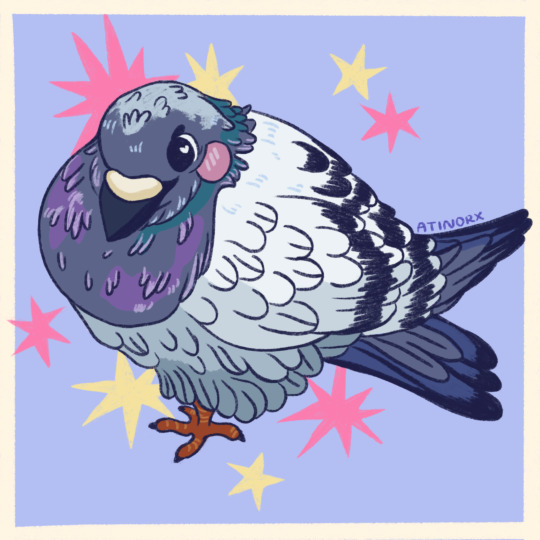
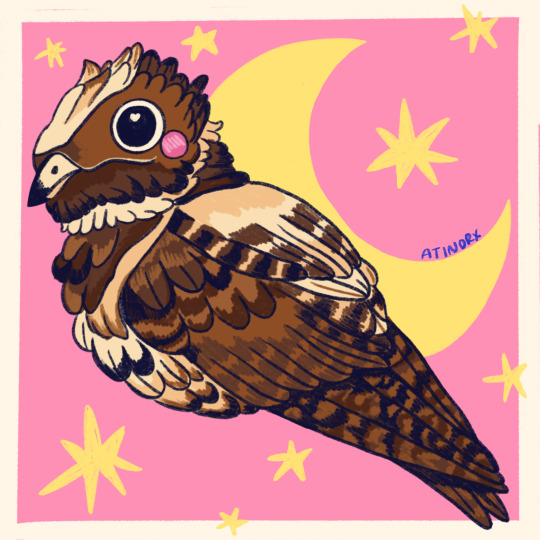
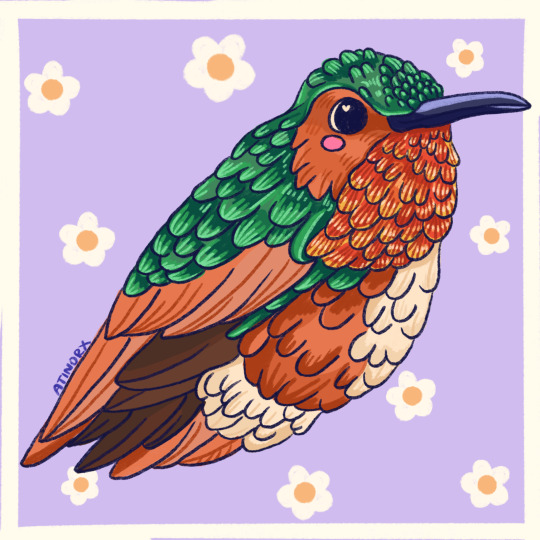
pigeon, night jar, & allen’s hummingbird
#pigeon#birblr#birb#birb art#nightjar#hummingbird#atinorx#art#colorful#my art#illustration#artists on tumblr#bird art#birder#birds#ghibli aesthetic#animal art
2K notes
·
View notes
Text
Life-List Series #9: WODU

Common Name: Wood Duck Scientific Name: Aix sponsa
Description: A very colorful duck found in trees and near rivers Motto: Joseph's Technicolor Dreamduck



Conservation: Least Concern, increasing Range: Across the USA year-round, migrating to southern Canada in the breeding season, and down to central Mexico in the nonbreeding season Habitat: Riparian habitats, wetlands, marshes, and beaver ponds; forested wetlands with high amounts of vegetative cover and trees for nesting are priorities during the breeding season



Diet: Acorns and tree seeds, aquatic plants and grasses, berries, nuts, beetles, flies, caterpillars, bugs, isopods, and other aquatic and terrestrial insects Breeding: Annually monogamous double-brood cavity-nesters with strictly maternal care of 10-13 eggs per brood Sound (F): oo-EEP oo-EEP oo-EEP Sound (M): zeeeeEEEEET zeeeeEEEEEET

Ornithologist's Notes: What exactly is up with that iconic whistle? Wood Ducks, already iconic in their appearance, have an equally iconic call, divided by gender into those recognizable whoops and whistles. In the '70s, the female's whooping call was well-studied for its recognizability not to us, but to wood duck ducklings, which have a lot more diversity in their vocalizations than the adults, and seem to easily be able to recognize individuals. Not an unusual thing in birds by any means, but still a manner of focus in early study. One 1972 study suggests that this discrimination begins with the embryo in the egg, although that seems somewhat uncertain, if interesting. Also, both species have a unique nonvocal sound feature: their wings whistle when they fly! Allegedly; they aren't the only duck with this trait, though.
Oh, also, closest relative is the Asian (and introduced European) Aix galericulata, AKA the Mandarin Duck! But, if you've seen the Mandarin Duck, that shouldn't come at a surprise. Lastly, they're the only North American duck that regularly double-broods, meaning they have two clutches per year, every year! Those broods are in high trees, and if you know these guys, you've probably seen videos of duckling raining from the sky as they leave the nest. They bounce!

Life-Life Notes: Man, if there's a North American duck more handsome than the Wood Duck, I don't know what it is. These were my most anticipated duck as a kid moving to the mainland States, and for good reason! Beautiful males and females (note the iridescent blue speculum on the wing there), and still one of my favorites to see and hear. To be honest, I don't think I did this duck much justice with the drawing style, especially in terms of the iridescence. And obviously, I only have the male posted here. I'm considering doing something with these drawings, as I've hinted in my tags up to now, so I may also be adding making alternate designs for those I've already posted, including the females where sexual dimorphism is apparent, like here and in the rest of the ducks. We'll see...and lemme know if that's something people would be interested in. Again, only considering it for now. On to the next duck!
Previous: MUDU
Next: AMWI
#birds#birding#birdwatching#birdblr#birblr#bird#birder#black birder#bird watching#birds of tumblr#life list#bird life list#duck#wood duck#aix#aix sponsa#art#artist#bird art#stylized#sticker#sticker art
179 notes
·
View notes
Text
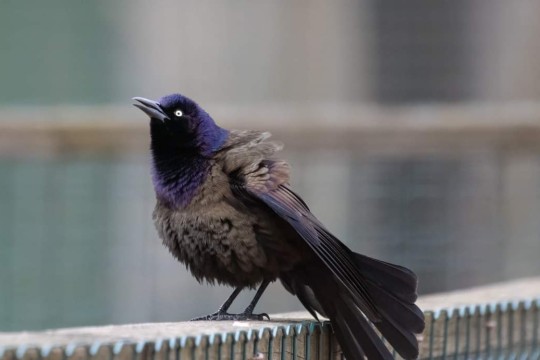
Caught mid-grackle!
It's finally warming up and the massive flocks of grackles are returning to my home state of CT.
Many don't know, but they're an introduced species that flourished in the states, and now unfortunately outcompetes many native species.
^ this is wrong and I apologize. The Great Tailed Grackle is the introduced and invasive one. This image is a common Grackle! Thanks to the commenter for the catch :)
They're still cute when they call though 🥰 I took this picture at the Forest Park Zoo in Springfield. Check it out it's a great little zoo!
#birder#photography#bird photography#birding#birds#nature#wildlife#wildlife photography#grackle#grackles#nature photography#neature#artists on tumblr#art#my photos
830 notes
·
View notes
Text
the reasonable hour of the morning bird gets the berry


(american robin)
#art#beginner photographer#photography#amateur photography#nature#photographers of tumblr#birdblr#birder#birblr#birding
76 notes
·
View notes
Text
i mean fuck, i like bills, i like ducks, i like petting budgies, i like fishers, i like fruit doves, i like cheep-cheeping and molt preening and crows with hoods, i like doin' migration shit. pecker? probably wood

#just saw the fish one again i had to make this im sorry if someone already has made a bird one LMAOOO#doechii#denial is a river#birds#birder#birds of tumblr
108 notes
·
View notes
Text
I'm a birder, does anyone else do this or is it just me?
Bird: [appears] Me: Omg hellooooo, who are you?? ** Bird I think might be rare: [appears] Me: Ooooo???? Bird: [turns out to be a sparrow or something] Me: Oh. It's just YOU. -_- **
#yes I verbally say “hello” to every bird I see when I'm birding#yes it's probably weird#but i had to know if anybody else also does this#birding#birders#birdblr#birder#birdwatching#birds#birds of tumblr#wild birds#birdies
63 notes
·
View notes
Text



Winter Wren
#photographers on tumblr#artists on tumblr#original photographers#original photography#nature#birdblr#wren#todays bird#birds of tumblr#birder#bird photography
40 notes
·
View notes
Text
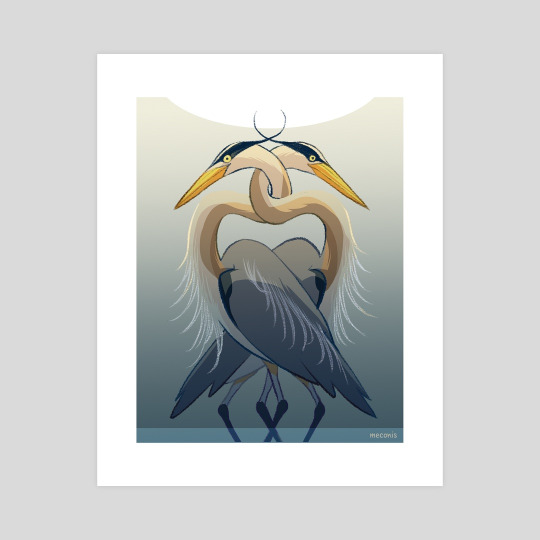
Twinned Herons by studio member @dylanmeconis
#great blue heron#studio members#dylan meconis#digital art#birds#prints#artists on tumblr#helioscope#birdwatching#birders
45 notes
·
View notes
Text
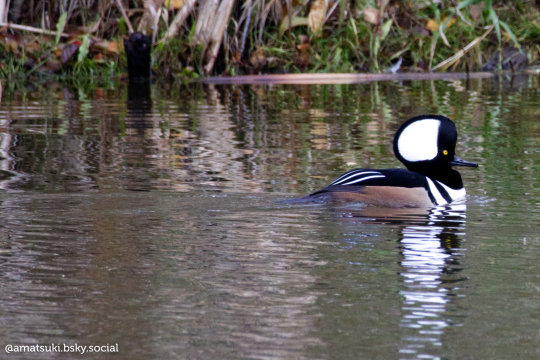
it’s Weird Duck Time™
#merganser#birds#bird photography#photographers on tumblr#birders on tumblr#my photos#if you don't know what 'weird duck time' check out rosemary mosco's 'four seasons of bird watching' comic#hood merganser
61 notes
·
View notes
Text
So chuffed to have gotten a photo of this beautiful crane.
0 notes
Text

Breadcrumbs for the ducks. 🍞🦆🦆🌸🍃🪻🪷
#pop art#contemporary art#fine art#folk art#basquiat#modern art#duck#ducktales#ducks#ducks of tumblr#ducklings#duck art#duckling#duckbill#flowers#parks and rec#birds#birder#bird watching#bird migration#birding#bird art#claude monet#henri matisse#lily pond#breadcrumbs#make way for ducklings#duck tales#impressionism#impressionist art
14 notes
·
View notes
Text

northern flicker - carpintero de pechera común
as you may infer, in spanish, some kinds of woodpeckers are called “carpinteros” which literally means carpenters!
#birdblr#birding#birds#birdwatchers#nature#wildlife#birbs of tumblr#birdwatching#wildlife photography#bird photography#birder#aves#avian
18 notes
·
View notes
Text
Life-List Series #8: MUDU

Common Name: Muscovy Duck Species: Cairina moschata
Description: A dark-colored duck with green and blue wings, and bare skin around the eyes with red wattles Motto: Waddling the line between wild and domestic.
Conservation: Least Concern Range: Coasts of Mexico and Central America, extending into South America, down to northern Argentina and Uruguay; introduced to Florida, Texas, and the UK Habitat: Tropical wetlands, coastal lagoons, and lowland marshes; varied for introduced populations, but usually in areas near water
Food: Stems, seeds, grasses, aquatic plants and leaves, small fish and reptiles, invertebrates (especially termites) Breeding Info: Polygamous, although males are territorial and aggressive; single-brooders with mostly maternal care and loose paternal contact after hatching; nest-box and tree-hollow users when nesting, with a clutch of 8 - 15 white eggs that hatch precocial young Sound: ...

Ornithologist's Notes: Is the Muscovy duck actually distributed in Florida? Well, yes and no. Fun fact, first off, there isn't a lot of actual work done on wild Muscovy Duck in their South American range. Most papers you'll see focus on the domesticated variety, which is also the version of the duck introduced outside of its range. But even then, do feral ducks count as a wild species in parts of its range? Maybe. In central and southern Florida, the species has populations in the thousands, distributing far outside of domestic settlements, and enmeshing themselves within wild environments. It's not necessarily invasive, and it fits within existing niches with little overlap, except for one closely-related species I'll get to in the next entry. Also, quick note, those white patches vary wildly in the domestic variety, where they're basically just restricted to those big white wing patches in the wild populations. Is that from introgression from domestic mallards, or a result of hybridization? Maybe. Is that because of the fixing of a deleterious copy of the MYOT and MB gene pairing that controls melanization, alongside differential expression throughout the feathers dependent on some mystery of genomic structure? Very well could be? Are there any papers on that comparison? Not yet. We'll see, though.

Life List Notes: Does this count as a life-list bird? I think so! To be clear, I saw these guys for the first time in central Florida (Orlando), and while they were around a human settlement, they weren't kept in a domestic setting, and seemed like a wild (or feral) flock that had arrived to the water-dominated resort independently, rather than being brought there and fed there. What's more, they weren't heavily domesticated, and at least appeared to be pure Muscovy Duck, rather than hybrids with Mallards (Anas platyrhynchos) or other domesticated duck species. Plus, Florida birders seem to think that these count for life-lists, since they're independently distributed and established. So, does it count? We're gonna say yes! And now, for the next one, we move on to a species that definitely counts for the life-list...even if it is a really common duck to see. Also, we're in ducks now! Excited, I love ducks.
Previous: TRSW
Next: WODU
#birds#birding#birdwatching#birdblr#birblr#birder#black birder#birds of tumblr#life list#bird life list#duck#muscovy duck#cairina#cairina moschata#art#artist#bird art#stylized#sticker#sticker art#domestic duck
89 notes
·
View notes

